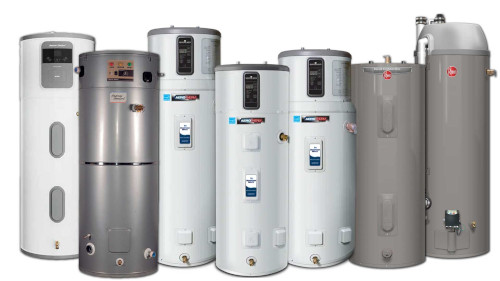
Simply stated, a water heater turns cold water hot by using about 15% of your energy bill. Until it doesn’t. There are a few things you can do to keep that percentage small, extend the life of your current heater, and maybe just head off that death leak before it floods the place.
Being Friends
Every year, remove the sediment that accumulates at the bottom of the tank by draining two or three gallons of water. Most heaters have a ‘hose bib’ style drain, a garden host neatly leads the water away. A bucket will sometimes work, but remember this is the hottest water in the house, at the most pressure. Be gentle.
While you’ve got the bucket handy, look near the top for the temperator and pressure relief (TPR) valve. This gizmo has a pipe leading nowhere, with a flip lever on top. We just need to make sure it’s not corroded shut. Pull that up to let a little water spritz out the open pipe. Let go, it should immediately stop. If you’ve got to help it either way, it’s time for a service.
There is also a ‘sacrificial anode’ which corrodes away so the heater doesn’t. It looks like a plug on top, but is really a metal rod that should be replaced every 5 years or so.
Finally, listen to the thing. With someone in the shower, etc watch it heat for a few minutes. Any sounds it didn’t make last year? New rusting or weeping?
The big event
A conventional tank style heater is getting old by 10 years, but might live to be 20. How long will this one live? If it really blows a gasket, the answer is obvious, and your next steps is to find the shutoff valve or valves on the pipes leading into the top of the heater. Multistory homes might have two shutoffs – do them both so using a faucet upstars doesn’t drain cold back into the leaking heater. And please turn the heat off! Gas models have a thermostat with gas knob, sometimes hidden under a tin cover because beauty? Often the knob has to be pushed in to get to the ‘OFF’ position. Electric heaters may have to be turned off at the breaker, either way get it turned off. It’s not an air heater.
A small leak or a new noise often comes just before the gasket blowing. Either way, it’s time to think. What should it be replaced with? Lots of sexy new heaters out there, but everyone just gets a new tank. Why? Its us. Meaning Wisconsin.
Replacement
‘Cool’ Heaters
There are a number of advanced ways to make water hot, most being more efficient than what you have now. We won’t dwell on those. Some of them are best left for new construction, some aren’t for Wisconsin at all. For example hybrid heaters work like a heat pump, warming water by cooling the air around it. The air around it needs to be outside air. 0 to 140 is a big ask.
Tankless, or on demand heaters, only heat when water is being drawn. They are cheaper to run, however the heater (and it’s installation) must be sized to instantly turn Lake Michigan water hot in January. Mainly, it’s another retrofit problem. If you don’t have one, the power feed Tankless heaters also don’t like well systems. Maintenance involves pumping vinegar water through the thing for an hour or two and make that two hours every year, because well water is hard. Local pressure tank? Water temp changes with water pressure. A real shower experience.
Boring Heaters
Conventional gas or electric tank heaters have been around. They use a glass lined tank with burners or electric elements to keep a supply of hot water ‘on tap’. Keeping hot water around does cost money, but not as much as it once did thanks to todays insulation. If you’ve already got a tank buried in the basement, you probably want another one.
A tank size of 20 gallons reserve plus 10 gallons per person buys reserve heat to hold that winter water down. Literally. New cold water slides in on the bottom. It’s heavy and only rises as it heats up. Thanks to this divide, the top stays hot to the very end.
Feel free to skip this paragraph on why electric heaters have two elements. Electrics have a limited amount of power compared to a roaring gas burner, they must divide and conquer. When cold water appears at the bottom, all available watts are sent to the lower element, heating the lower part of the tank below the ‘thermocline’. When the cold side rises past the element located halfway up, that one comes on – and the bottom shuts off. Using all the power against half the water keeps the top half warmer longer. A side bonus, if an element goes out, you’ll get some kind of heat. A half serving of hot water, or a tank 3/4 full of tepid. Not that expensive to fix.
Point of Use
With the main heater in the basement and a bathroom on the second floor, you may have, or want, a ‘point of use’ heater. On the smaller end, undersink heaters can serve up a few gallons until the incoming water is up to temp. On the other, a single 110v breaker will feed tanks up to 20 gal. These won’t exactly fit undersink, basically it needs to be next to the shower with access to it’s drain line.
